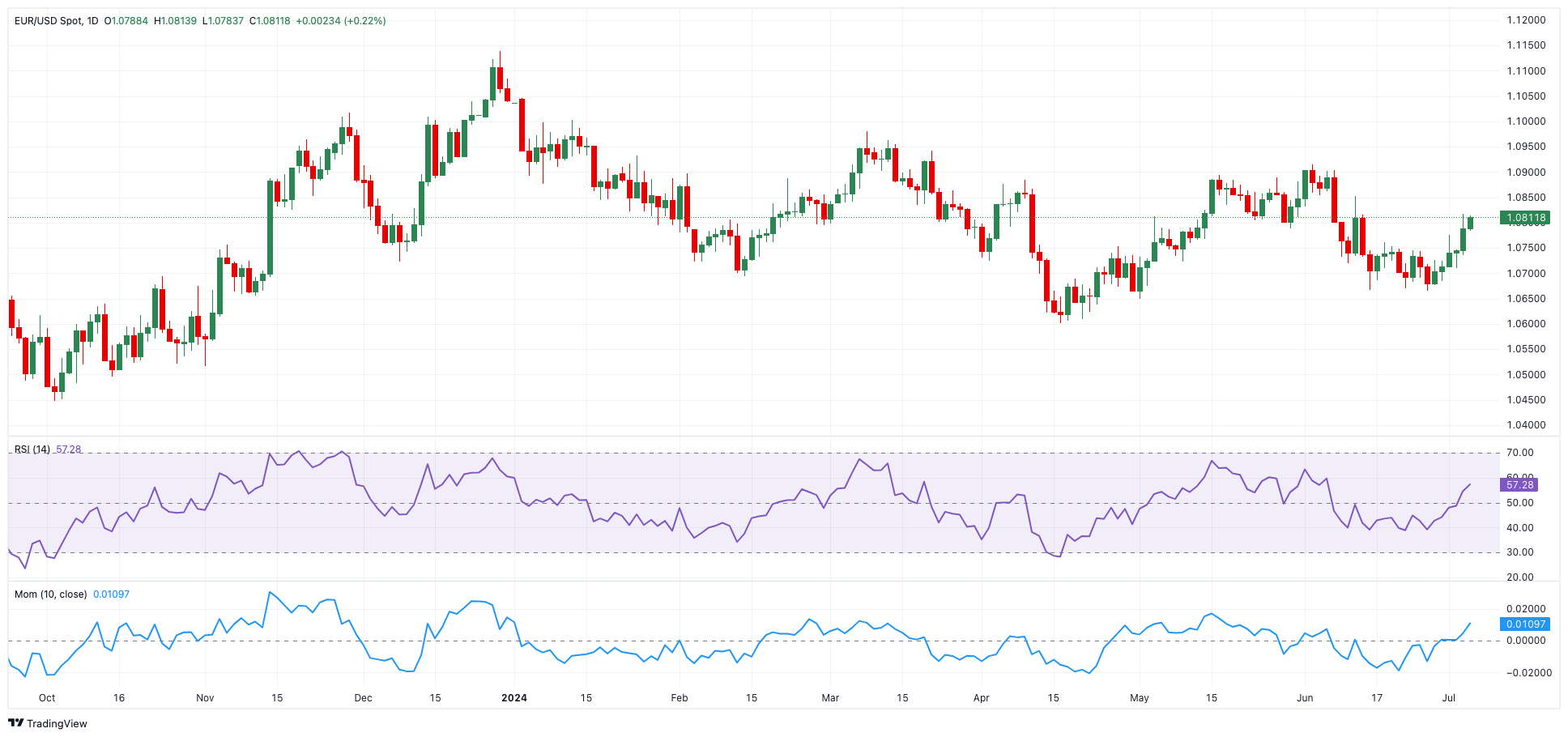- EUR/USD maintained its upside bias above 1.0800.
- There was no activity in the US due to the Independence Day holiday.
- Investors’ now look at Friday’s US Payrolls.
The US Dollar (USD) experienced another bearish performance, motivating the USD Index (DXY) to revisit the vicinity of the 105.00 region amidst the dominating appetite for risk-related assets and marginal trading conditions due to the US Independence Day holiday.
The downturn in the Greenback kept the upward pressure intact on EUR/USD, pushing it back above the key 1.0800 yardstick. The pressure on the Greenback intensified following discouraging results from the US economic calendar in the previous session, particularly concerning the labour market, which revived expectations of Federal Reserve (Fed) interest rate cuts as early as September.
Closer to home, the ECB published its Accounts of its June 6 meeting, where it trimmed rates by 25 bps, as widely anticipated. In the Accounts, policymakers showed concern about inflation after cutting interest rates last month, fearing further delay could be costly and complicate future efforts to anchor inflation expectations. The bank’s officials also noted that the final phase of disinflation, known as “the last mile,” is the most challenging.
Meanwhile, the macroeconomic landscape remained relatively stable on both sides of the Atlantic. The ECB is contemplating further rate reductions beyond the summer, with market expectations leaning towards two additional cuts by year-end. Conversely, speculation among market participants surrounds whether the Fed will implement one or two rate cuts this year, despite the Fed’s current projection of a single cut, likely in December.
Based on the CME Group’s FedWatch Tool, there is approximately a 73% likelihood of interest rate cuts in September, contrasting with nearly a 95% probability by the December meeting.
The recent ECB rate cut, coupled with the Fed’s decision to maintain rates, has widened the policy divergence between the two central banks. This discrepancy could potentially lead to further weakening of EUR/USD in the short term. Nonetheless, prospects of economic recovery in the Eurozone, alongside perceived weaknesses in US economic fundamentals, may mitigate this disparity, offering occasional support to the currency pair in the near future.
Looking forward, the next pivotal event for the currency pair will be the release of the highly influential Nonfarm Payrolls report for June on Friday, preceding the second round of French snap elections scheduled for July 7. Regarding the elections, Le Pen’s NR party is anticipated to capture between 210 and 250 seats out of the 289 seats required for a majority in the National Assembly.
EUR/USD daily chart
EUR/USD short-term technical outlook
Further higher may see EUR/USD revisit the July peak of 1.0816 (July 3), followed by the weekly high of 1.0852 (June 12) and the June top of 1.0916 (June 4). If the pair breaks above this region, it might put the March peak of 1.0981 (March 8) back on the radar, ahead of the weekly high of 1.0998 (January 11) and the psychological 1.1000 mark.
If bears regain the upper hand, spot may fall to its June low of 1.0666 (June 26), then the May low of 1.0649 (May 1), and ultimately the 2024 bottom of 1.0601 (April 16).
Looking at the broader picture, extra gains appear on the cards on a sustainable surpass of the key 200-day SMA (1.0794).
So far, the 4-hour chart shows the continuation of the bullish impulse. The initial resistance level is 1.0816, followed by 1.0852. The nearest support is at 1.0666, ahead of 1.0649 and finally 1.0601. The Relative Strength Index (RSI) climbed to about 69




